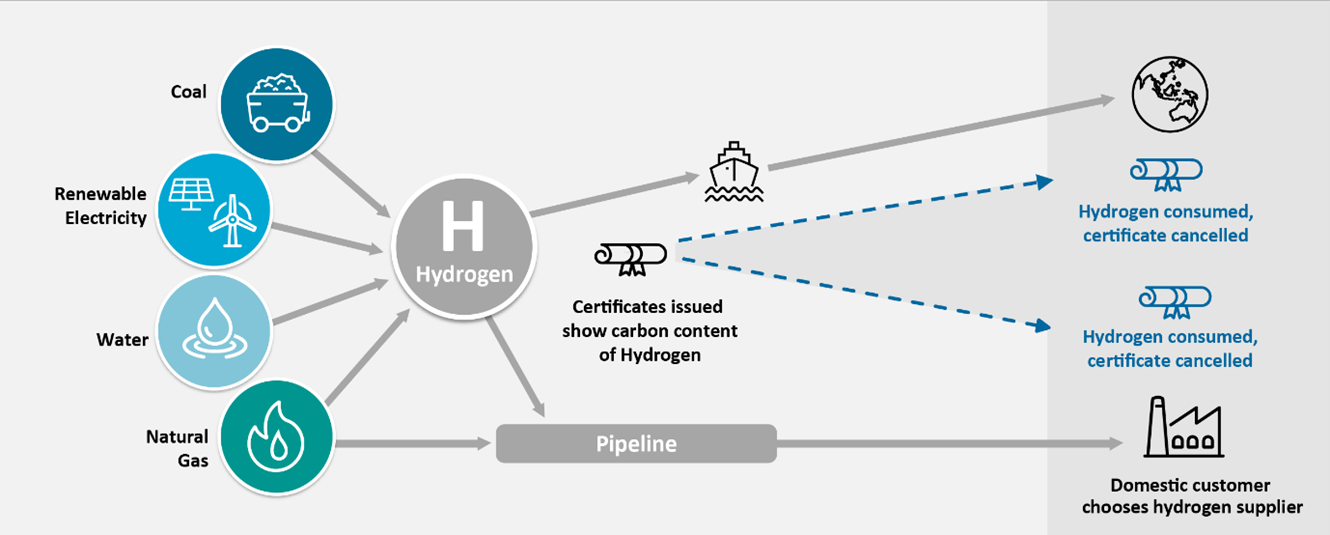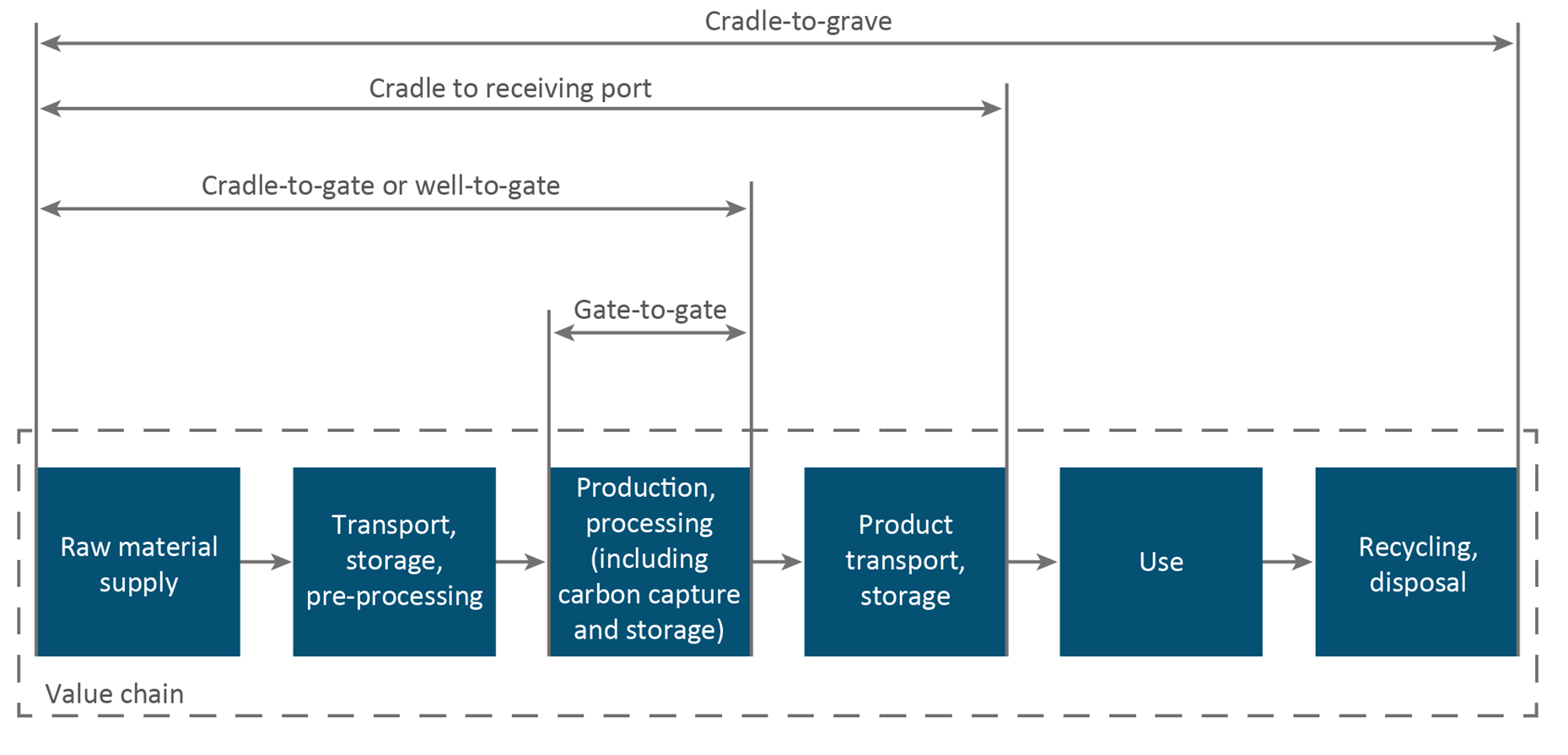Hydrogen comes in almost every colour, be it blue, yellow, pink, turquoise, grey, black, brown or green. Green hydrogen (GH2) is however the most attractive type, as no greenhouse gases are emitted during its production. Determining the “shade” of GH2 is complex. For example, can GH2 still be considered green if its methods of transportation, storage or disposal are not carbon-neutral? Is GH2 still green if carbon offsets are used to counter emissions? In the absence of a clear regulatory framework to classify the shade of “greenness,” all GH2 is definitely not equal.
Internationally there is no agreed definition for GH2, which complicates its certification. Australia’s Clean Energy Regulator (CER) is in the process of establishing a hydrogen certification scheme – the Guarantee of Origin (GO). The GO scheme will involve additional compliance costs to quantify emission intensity across various stages of the hydrogen lifecycle. While the GO scheme will lead to an increase in compliance costs, the resulting emission transparency will boost the credibility and business case of renewable hydrogen producers. This should contribute to an increase in GH2 demand, as certification will enable consumers willing to pay a premium for a cleaner product, to identify that product with certainty.
How will the scheme work in practice?
The GO scheme will quantify and display essential attributes like where and how a unit of hydrogen is produced. This data will be captured in a digital certificate, allowing consumers to select the hydrogen supply most suited to their sustainability requirements. The practical application of this process is set out below:

Figure 1: Practical application of the GO scheme (source: Clean Energy Regulator)
System Boundary
A key consideration for developing a GO scheme is determining an appropriate “boundary” from which emissions are to be measured (see Figure 2). This boundary should be clearly defined and consistently applied to enable an accurate comparison of hydrogen supplies. The broadest boundary would cover the lifecycle emissions of one unit of hydrogen, a ‘cradle-to-grave’ approach. This approach will consider the carbon emissions involved during supply, production, processing, transport, storage, use, recycling and disposal. Conversely, the narrowest boundary would only cover the emissions occurring at the production facility, a ‘gate-to-gate’ approach. While a ‘cradle-to-grave’ approach will increase accountability, the complexity of data capturing may lead to diminished accuracy.

Figure 2: System Boundary Options (source: CER discussion paper)
On 21 June 2021, the government released a discussion paper outlining an approach to developing Australia’s hydrogen GO scheme. Subsequent consultation with Australian stakeholders revealed that a well-to-gate approach (which includes emissions associated with extraction, fossil fuel processing and transportation and hydrogen production) is the preferred approach. Selecting a boundary that is consistent with international standards is therefore crucial to ensure that international trading of hydrogen is fair and transparent.
Carbon Offsets
Carbon offsets also impact the shade of GH2. One of the challenges in developing a GO scheme is determining whether such offsets should be allowed to achieve a zero or low-emissions hydrogen certification. CER’s consultation with stakeholders identified that those in favour of offset inclusion recognised that offsets could help the development of the industry in the early stages and provide a greater selection of products to consumers. Equally, those against offsets proffered concerns that the inclusion of offsets may not be accepted internationally, particularly as there is scepticism about the permanence of non-geological carbon storage.
What are our international counterparts doing?
There are a handful of hydrogen certification schemes abroad, the most notable being Europe’s industry led CertifHy Scheme. Founded in 2014 by a consortium of industry stakeholders, CertifHy was created with the aim of establishing minimum thresholds of hydrogen emissions intensity. The CertifHy Scheme utilises a well-to-gate boundary but does not permit carbon offsets. While the Scheme was one of the first of its kind and a good foundation to build upon, there are some shortcomings that the Australian GO scheme should improve on. These include that the CertifHy Scheme is only applicable to hydrogen used in transportation and that it does not facilitate price differentiation between various colour categories of hydrogen.
Where are we now?
On 10 December 2021, the Department of Science, Energy and Resources and the CER announced the commencement of GO scheme trials with companies who have been operating or have well-advanced hydrogen pilot projects. Over the next 15 months, these trials will test the practical application of methodologies for hydrogen carbon emission and ultimately help settle the specifics for the GO scheme. Phase 1 kicks off in March 2022, with phase 2 following from August 2022 to June 2023. The GO trials will not only inform an Australian hydrogen certification scheme, but also play a significant role in shaping international certification standards.
Conclusion
Determining an appropriate system boundary and considering carbon offsets are just two of many important considerations in developing a GO scheme. It is hoped that the scheme will evolve over time to include additional hydrogen production pathways and value chain components. Until the GO scheme is rolled out, we will however continue to see fifty (or so) shades of green.
The Hamilton Locke team advises across the energy project life cycle – from project development, grid connection, financing, and construction, including the buying and selling of development and operating projects. For more information, please contact Matt Baumgurtel.